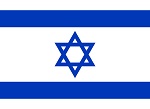Hobby Master HG4710 Israeli M7 HMC Priest Self-Propelled Gun - Unknown Artillery Unit, Sinai Front, 1967 (1:72 Scale)
"The one thing I cannot forgive the Arabs for is that they forced our sons to kill their sons."
- Israeli Prime Minister Golda Meir
 Nicknamed the 'Priest' by British crews because of its pulpit-shaped machine-gun turret at the front, the M7 grew from US experience with howitzers mounted on half-tracked vehicles. The War Department soon realized that a fully tracked carriage was required, and the M3 tank was modified to fill the role. The British received many M7s under the provisions of the Lend-Lease arrangement and first deployed them at the second battle of El Alamein in the summer of 1942. Some measure of their popularity is suggested by the British order for 5,500 to be delivered within one year of their first use. The drawback, at least for Commonwealth forces, was that the howitzer was not standard British issue, and thus required separate supplies of ammunition. Mobile and reliable, the M7 fought to the end of the war and remained in service with several armies as an armored personnel carrier.
Nicknamed the 'Priest' by British crews because of its pulpit-shaped machine-gun turret at the front, the M7 grew from US experience with howitzers mounted on half-tracked vehicles. The War Department soon realized that a fully tracked carriage was required, and the M3 tank was modified to fill the role. The British received many M7s under the provisions of the Lend-Lease arrangement and first deployed them at the second battle of El Alamein in the summer of 1942. Some measure of their popularity is suggested by the British order for 5,500 to be delivered within one year of their first use. The drawback, at least for Commonwealth forces, was that the howitzer was not standard British issue, and thus required separate supplies of ammunition. Mobile and reliable, the M7 fought to the end of the war and remained in service with several armies as an armored personnel carrier.
This particular 1:72 scale replica of a M7 'Priest' served with an unknown unit, then deployed on the Sinai Peninsula during 1967.
Sold Out!
Dimensions:
Length: 3-1/4-inches
Width: 1-1/2-inches
Release Date: February 2016
Historical Account: "Battle of Abu-Ageila" - The 1967 Battle of Abu-Ageila was a military confrontation between the Israeli and Egyptian military that was part of the Six-Day War of June 1967. The Egyptian defeat here was an important factor in the loss of the entire Sinai Peninsula to Israeli forces in the following days of the Six-Day War.
The Israeli attack at Abu-Ageila was part of the Israeli offensive into the Sinai Desert. This attack was led by the Southern Command, consisting of three divisions under major generals Israel Tal, Avraham Yoffe, and Ariel Sharon. As part of the Israeli plan of Southern Command, Sharon was ordered to capture the road junction at Abu-Ageila in order to gain access to the central route into the Sinai Desert. The Egyptians had taken considerable preparations to prevent a breach there. Egyptian defences had focused on the Um-Katef (or Umm-Qatef) plateau to the east of Abu-Ageila, roughly 25 kilometers from the Israeli border. The defences were an important part of the overall defence plan, called Qahir, in the preparations for the expected war, later known as the Six-Day War.








